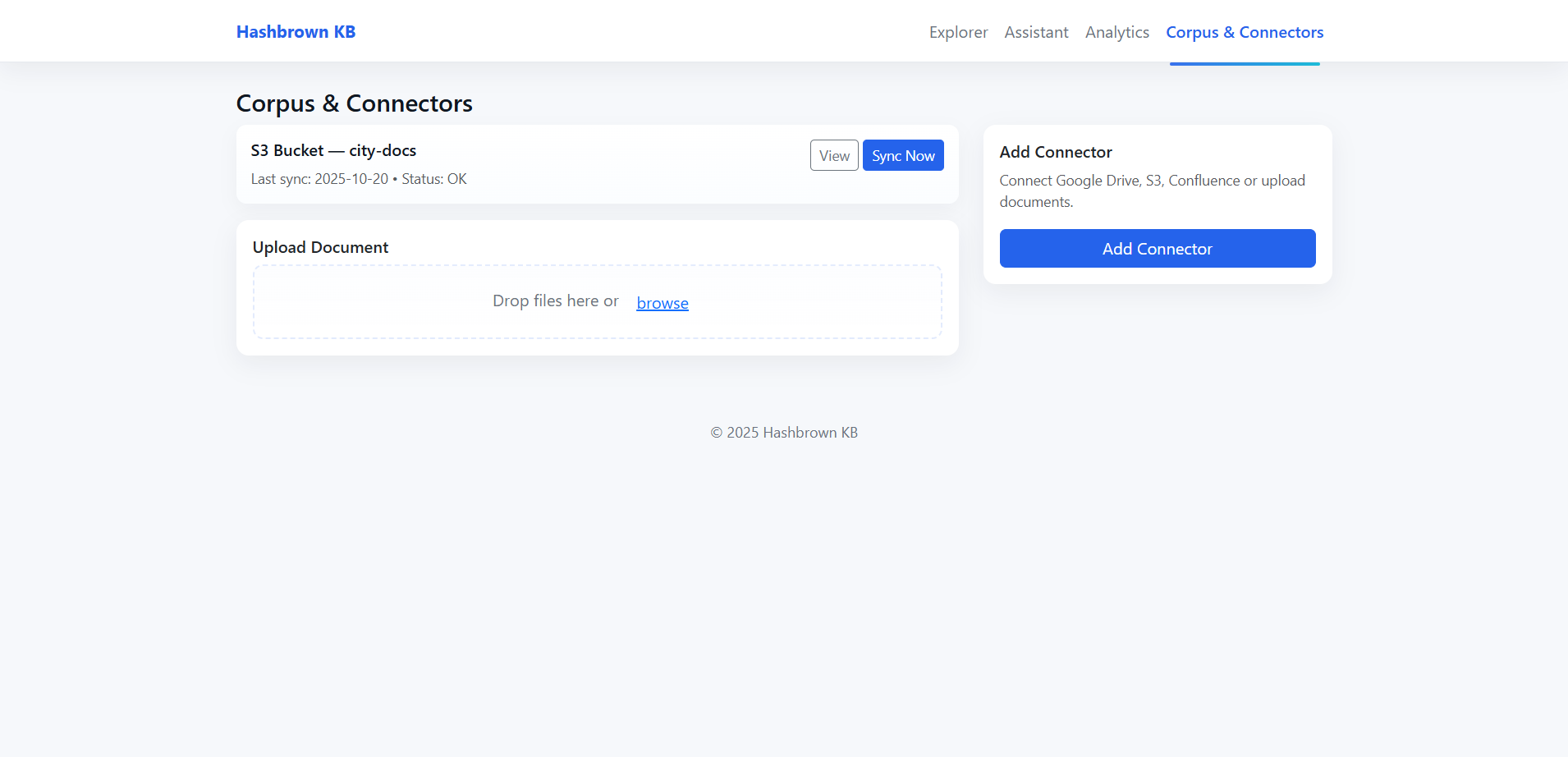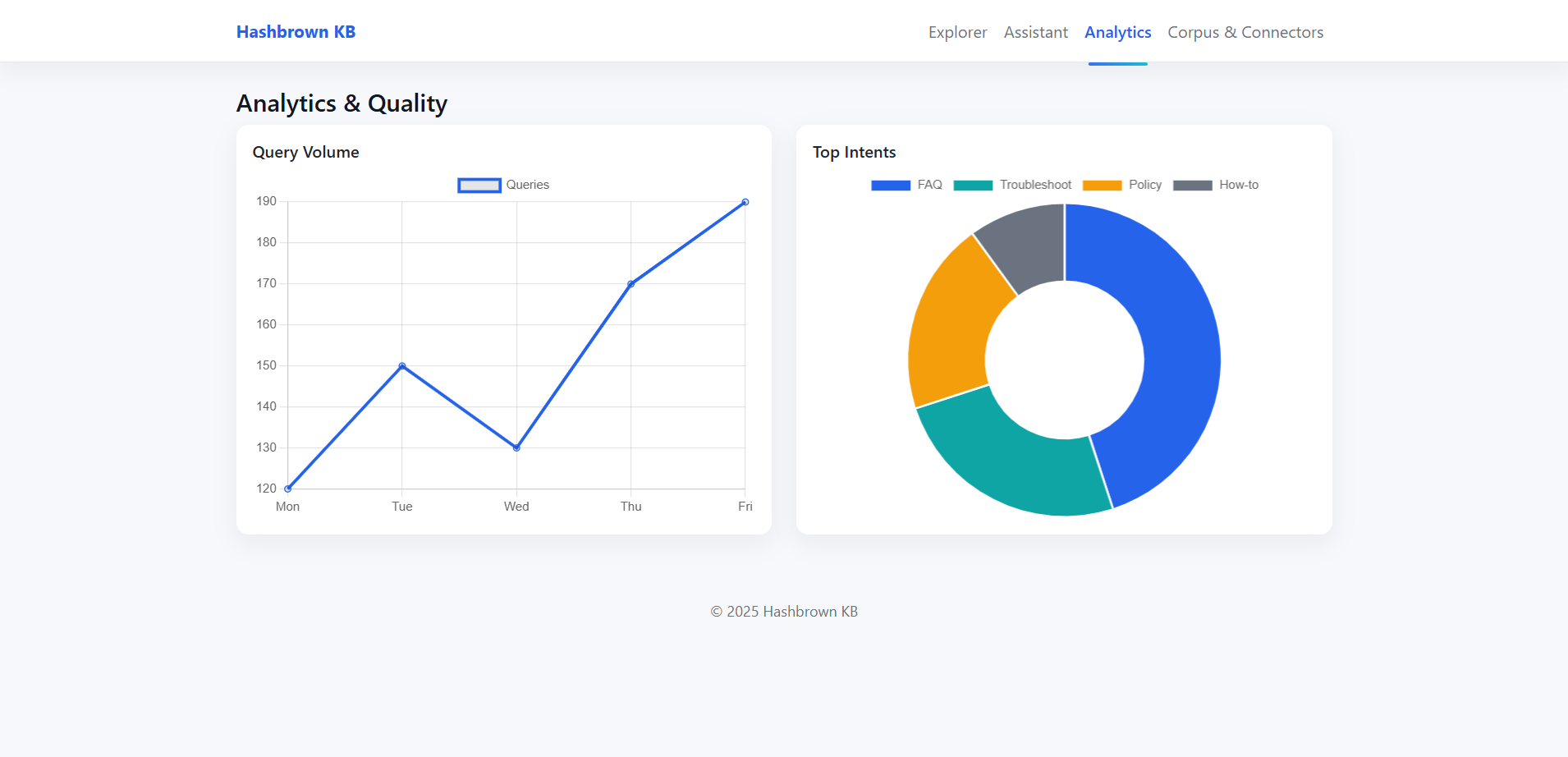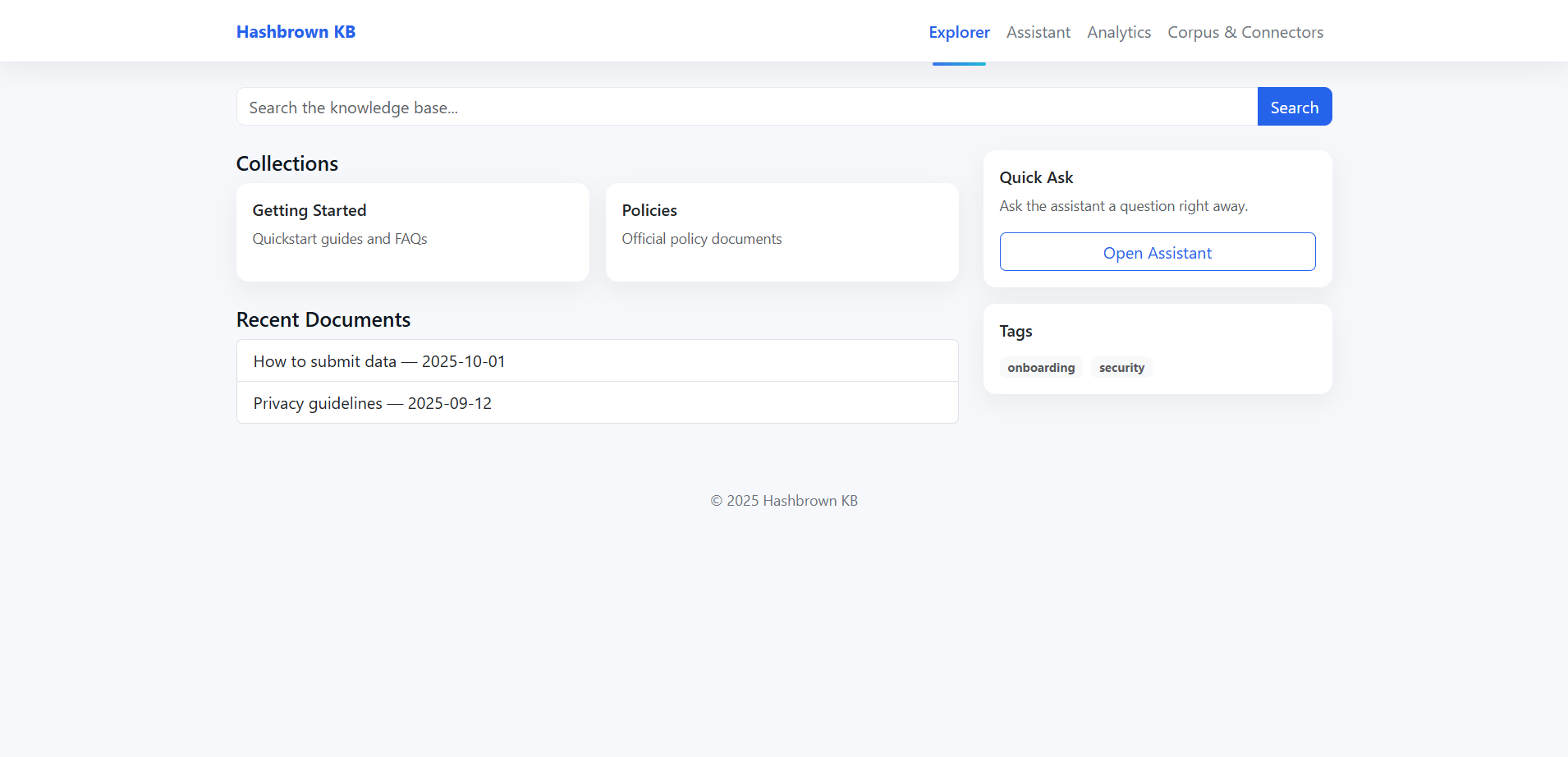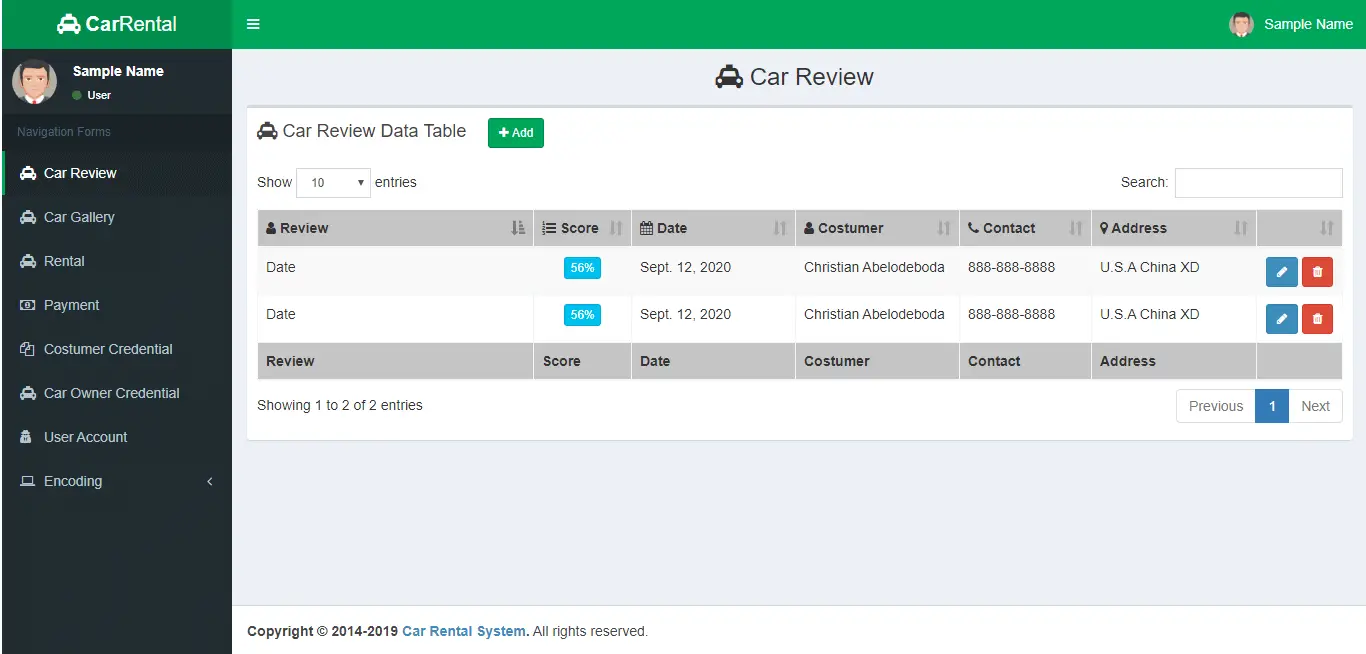Interactive Knowledge Base using Hashbrown
Table of Contents
- Interactive Knowledge Base using Hashbrown
- Introduction
- What is Hashbrown?
- Understanding the Interactive Knowledge Base Concept
- Objectives of the Project
- Proposed System Architecture
- Technology Stack
- Key Features of the Interactive Knowledge Base
- Implementation Steps
- Use Cases and Applications
- Advantages and Impact
- Challenges and Future Enhancements
- Summary and Conclusion
Introduction
In the modern digital age, organizations and institutions generate vast amounts of information daily. Managing, accessing, and updating this knowledge efficiently has become a vital challenge for businesses, universities, and government agencies alike. Traditional document repositories and static knowledge bases often fall short in terms of usability and scalability. This is where the concept of an Interactive Knowledge Base comes in—an intelligent, AI-driven system designed to make information retrieval dynamic, intuitive, and context-aware.
By leveraging Hashbrown, a generative development platform capable of building adaptive user interfaces and data-driven applications, we can revolutionize how users interact with stored knowledge. Through natural language queries, real-time content summarization, and AI-assisted data visualization, an interactive knowledge base can provide meaningful insights at lightning speed. This system is not merely a repository—it’s an evolving intelligence that understands context and learns from user interactions.
What is Hashbrown?
Hashbrown is an emerging low-code and no-code platform that allows developers and organizations to build AI-enhanced applications through Generative UI and intelligent automation. Its key innovation lies in automating interface generation based on user needs and datasets. By integrating with APIs, large language models (LLMs), and cloud databases, Hashbrown simplifies the development of data-centric systems that adapt in real time.
Hashbrown supports AI model integration, database connectivity, and workflow automation, making it a perfect foundation for building a responsive knowledge base. Instead of hardcoding UI elements or manually linking database queries, Hashbrown allows developers to describe intent—and the platform generates interactive dashboards, cards, and layouts accordingly. When paired with an AI model like OpenAI’s GPT or LangChain-based retrieval systems, it becomes a powerful tool for semantic search, document comprehension, and user-guided exploration.
Understanding the Interactive Knowledge Base Concept
A traditional knowledge base stores and organizes documents, FAQs, reports, and media files. However, an interactive knowledge base goes beyond that—it empowers users to communicate naturally with the system. Imagine typing, “Show me recent studies on climate-resilient farming,” and instantly receiving summarized insights, visuals, and links to related data—all generated dynamically by AI.
Key components of an interactive knowledge base include:
- Natural Language Processing (NLP): Allows users to query information using everyday language.
- Semantic Search: Retrieves data based on meaning, not just exact keywords.
- Generative Interface: Adapts UI components like cards, tables, and charts in real time.
- Auto-summarization: Produces concise overviews of lengthy documents.
- Interactive Visualization: Displays knowledge relationships using graphs or diagrams.
Such a system benefits universities, research organizations, corporations, and government offices by democratizing access to information—turning static data into living knowledge.



Objectives of the Project
The Interactive Knowledge Base using Hashbrown aims to:
- Develop an AI-powered knowledge management platform that enables dynamic interaction between users and stored information.
- Enhance accessibility by using natural language queries and semantic search for easy data retrieval.
- Integrate generative UI components that automatically adapt based on the user’s query or role.
- Provide intelligent summarization and visualization for better understanding of complex datasets.
- Facilitate collaboration among teams by allowing shared access, notes, and contextual insights.
These objectives align with the global trend toward intelligent knowledge systems that evolve through user engagement and machine learning.
Proposed System Architecture
The architecture of this system follows a modular and scalable design:
- User Interface (UI) – Built with Hashbrown’s generative engine to adapt dynamically to user queries.
- AI Layer – Powered by OpenAI GPT or similar models for natural language understanding and summarization.
- Semantic Search Engine – Implemented via LangChain, Pinecone, or Weaviate to match queries with contextually similar data.
- Database Layer – Uses PostgreSQL or MongoDB to store metadata, documents, and user logs.
- API Gateway – Connects backend models, knowledge storage, and frontend components securely.
- Visualization Layer – Uses dynamic charts and graphs generated automatically based on data type.
This layered architecture ensures modularity, performance, and future scalability for large-scale institutional deployment.
Technology Stack
| Component | Technology |
|---|---|
| Frontend | React.js, Tailwind CSS, Hashbrown Generative UI Components |
| Backend | Node.js or Python (FastAPI), Express.js |
| AI Integration | OpenAI GPT, LangChain for semantic retrieval |
| Database | PostgreSQL or MongoDB |
| Vector Database | Pinecone / Weaviate / FAISS |
| Deployment | Docker, AWS, Vercel, or Azure |
| Authentication | OAuth 2.0 / JWT |
| Version Control | GitHub / GitLab |
This modern tech stack ensures high scalability, fast response times, and easy integration with other enterprise systems.
Key Features of the Interactive Knowledge Base
- Generative Dashboards
Automatically generate interactive panels and cards based on query type and user preference. - AI-Powered Semantic Search
Retrieve documents or snippets that match the conceptual intent behind user queries. - Adaptive Chat Interface
Engage with the system conversationally, asking questions and getting summarized or cited responses. - Knowledge Graph Visualization
Display relationships among documents, authors, projects, or departments using visual networks. - Collaborative Notes and Tagging
Allow users to annotate documents, share feedback, and tag resources for group projects. - Role-Based Access Control (RBAC)
Secure sensitive information while providing personalized dashboards. - Document Ingestion and Auto-Indexing
Automatically analyze and categorize newly uploaded documents. - Generative Summarization
Produce short, accurate summaries of long reports or academic papers. - Performance Analytics Dashboard
Track system use, query types, and engagement metrics for admins and researchers.
Implementation Steps
- Phase 1 – Requirement Gathering: Identify information sources, content types, and user roles.
- Phase 2 – Data Preparation: Digitize, clean, and structure existing knowledge repositories.
- Phase 3 – AI Model Integration: Implement semantic search using embeddings and connect OpenAI API for NLP processing.
- Phase 4 – Generative UI Design: Build adaptive layouts through Hashbrown’s interface engine.
- Phase 5 – Testing & Optimization: Evaluate usability, response accuracy, and data protection compliance.
- Phase 6 – Deployment: Launch the system in a secure cloud environment with continuous monitoring.
This phased approach ensures a systematic and reliable deployment suitable for academic and institutional use.
Use Cases and Applications
- Educational Institutions: Centralized repositories for syllabi, lecture notes, research archives, and accreditation documents.
- Government Agencies: Policy knowledge base with citizen access and AI-assisted document search.
- Corporate Enterprises: Employee training, standard operating procedures, and project documentation.
- Healthcare Sector: Interactive access to patient education, protocols, and evidence-based medical research.
- Nonprofit Organizations: Knowledge hubs for social programs, volunteer resources, and field data analytics.
The system’s flexibility allows customization for any organization that values information accessibility and continuous learning.
Advantages and Impact
- Efficiency: Reduces time spent searching for information through AI-powered retrieval.
- Scalability: Easily expands to handle growing data and user bases.
- Engagement: Encourages knowledge sharing through interactive tools.
- Insight Generation: Transforms raw data into meaningful, actionable insights.
- Adaptability: Hashbrown’s generative engine allows real-time UI evolution without code modification.
- Inclusivity: Offers multilingual and accessible design for diverse user communities.
The integration of AI, automation, and adaptive design transforms the traditional notion of a knowledge base into a living, learning ecosystem.
Challenges and Future Enhancements
While the system holds immense potential, several challenges must be addressed:
- Data Privacy: Ensuring compliance with GDPR and institutional data protection standards.
- Model Bias and Accuracy: Regularly retraining AI models with updated and diverse data.
- Cost Optimization: Managing API and storage expenses for large-scale deployments.
- User Adoption: Providing intuitive onboarding to encourage system use.
Future enhancements include voice-enabled queries, integration with IoT data sources, multilingual translation, and advanced personalization based on user learning behavior.
Summary and Conclusion
The Interactive Knowledge Base using Hashbrown represents a new era of intelligent information systems. It combines the power of AI, generative UI, and semantic understanding to make knowledge management interactive, adaptive, and accessible. Institutions and organizations can use this technology to bridge the gap between static data storage and intelligent discovery.
By empowering users to interact naturally with information—asking questions, visualizing connections, and receiving real-time insights—this project demonstrates the potential of combining Hashbrown’s generative UI capabilities with the cognitive intelligence of OpenAI’s NLP models. The result is an ever-evolving platform that not only stores knowledge but also thinks, learns, and communicates—a true cornerstone of the next generation of digital transformation.
You may visit our Facebook page for more information, inquiries, and comments. Please subscribe also to our YouTube Channel to receive free capstone projects resources and computer programming tutorials.
Hire our team to do the project.


